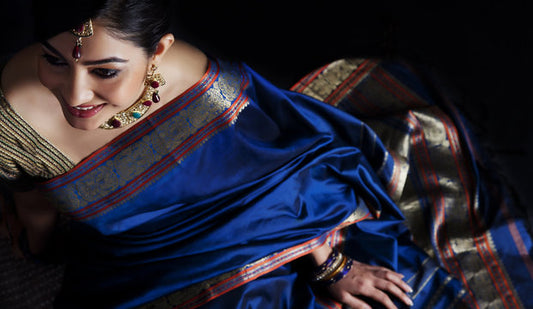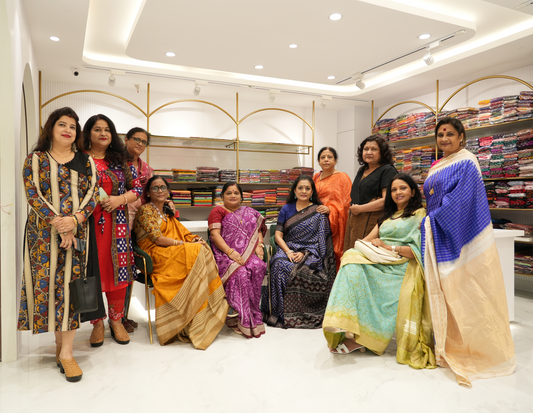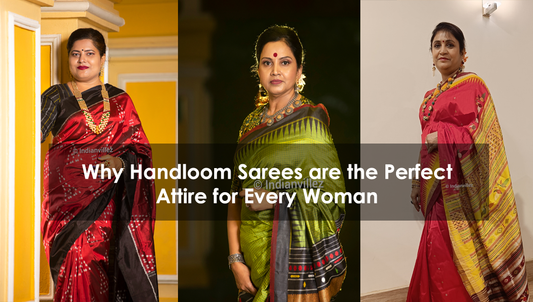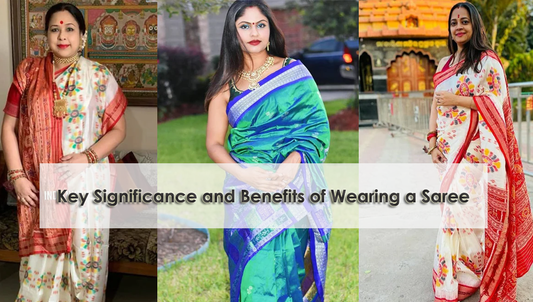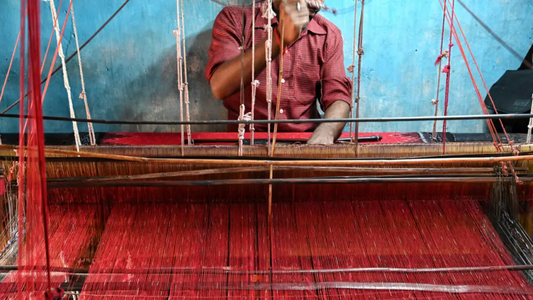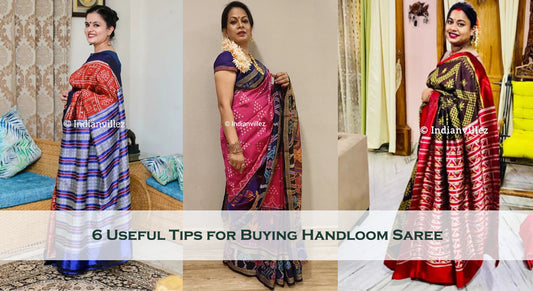
Handloom is one of the most prominent and primitive cultures woven into the heritage and legacy of India. Sarees are the most exquisite product of the same, hence often rendered as the crowning jewels. One of such craftsmanship is the hand woven “Khandua or Nuapatna” saree painstakingly woven by the handloom weavers of Nuapatna and Maniabandha in Cuttack district of Odisha. The sarees are made of colourful imprints of traditional motifs and aesthetic calligraphy having an artistic appeal. They have been called as “ the pride of Odisha” dawned by the Dieties of Puri and flaunted by the international Odissi dancers.
Khandua: Background
Khandua is quite antique to the state and has its roots from the temple culture of Odisha. The fabrics has got historical significances wherein they have been the dressing and offering to the deities of Lord Balabhadra, Devi Subhadra and Lord Jagannath. This noble custom is in place till date. Nuapatna and Maniabandha, the two villages and their adjoining areas have a long historical background of weaving typical ikat, tie-dyed cotton and silk fabrics spanning over a few centuries. The sarees have been a legacy and the craftsmanship have been carried down through the generations of artisans in the localities.

Weaving Technique
The craftsmanship is intricate, detailed, primitive, elaborate and painstaking. Khandua sarees are woven with mulberry silk yarn and sometimes in combination with cotton or tassar yarn. The basic raw material needed for the fabrics are cotton or pure silk yarn and the chemicals dye to make the ikat designs or motifs. The raw silk yarn obtained from the market is first degummed (taking away the natural gum from the yarn) by boiling with water with a proportionate mixture of soap powder and soda ash. The creation is basically a two fold dyeing process, one forms the color of the saree and the next is the colour of the motifs intended to be print on it, creating the multicolour pattern. Once the yarn is dry, it is tied to a wooden frame. Bindings / separators/ clusters in forms of cotton threads or rubber bands are strategically placed and are dye soaked for the first fold of dyeing. After drying, the bindings are cut away and new bindings are put in place for all locations that should not receive color in the second round of dyeing and immersed again till the final intended multicolored design of the saree are created.

The weaving process is then carried out on the traditional spinning wheel called as chakra. Finally the sarees are starched and tied on to wooden rolls and left under the sun to dry to add stiffness and sheen. The saree has a light color body and contrasting color border and pallav (anchal). This impeccable work is done charmingly at the corners of the Nuapatna. Every castle of the artist has tales to tell. Tales of the beauty, tales of creativity, tales of poise, and the tales of constancy can be keenly viewed in their eyes. The amount of honour they give to their artistry is immense. They only show and talk about their art to an aesthete or a craft admirer. The respect given to the craftsman must cross the fence of respect they give to their profession. Lately, the increasing demand has given the saree in the pinch of modernization. The colors of maroon, yellow, pink and cream are the leading colour of the prints. Besides sarees, the craftsmen also make bed sheets, pillow covers, stole, dupatta, cushion covers, table cloth, door screens, dress materials and handkerchief in these beautiful prints.
Bottom Line
The glory of the Khandua saree, shall be incomplete, unless the flip side of the coin has been highlighted. The saree is a legacy carried down through generations of weavers, who despite their laborious creations are still facing socio economic backwardness and deprivation. The governmental assistance appears to be insufficient as per the recent studies. This creates a major challenge to the sustainability of the craft and the livelihood options of the weavers in the long run as well as the export potential of the state. A better and regularly monitored supply of raw materials, induction to advanced technology, financial aids, adequate national and international market demand and supply, adequate advertising to spread the skill, internet influence to sell products directly to avoid the infiltration of profits, along with entrepreneurial, communal and political support are urgently required to keep the tradition alive and flourishing.
Also Read: Classic Sambalpuri - Pasapalli Bandhkala


